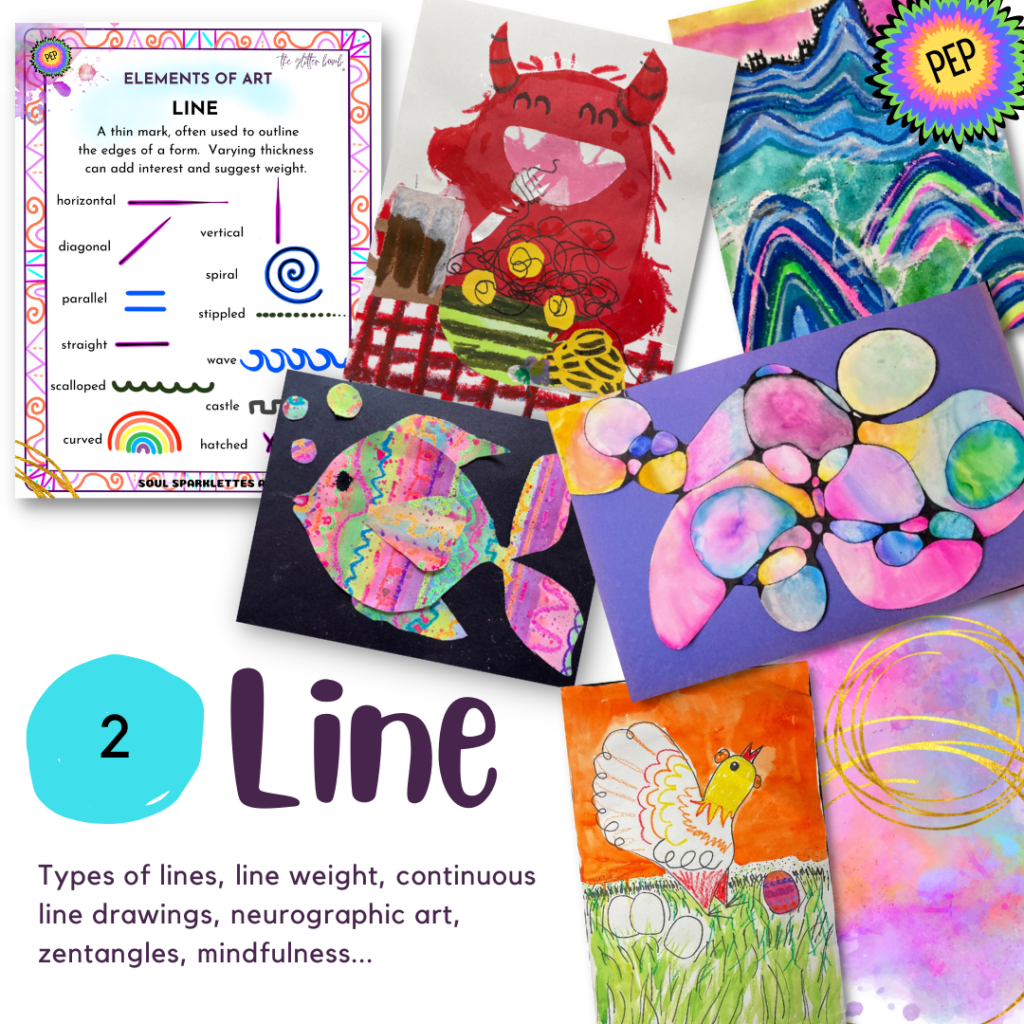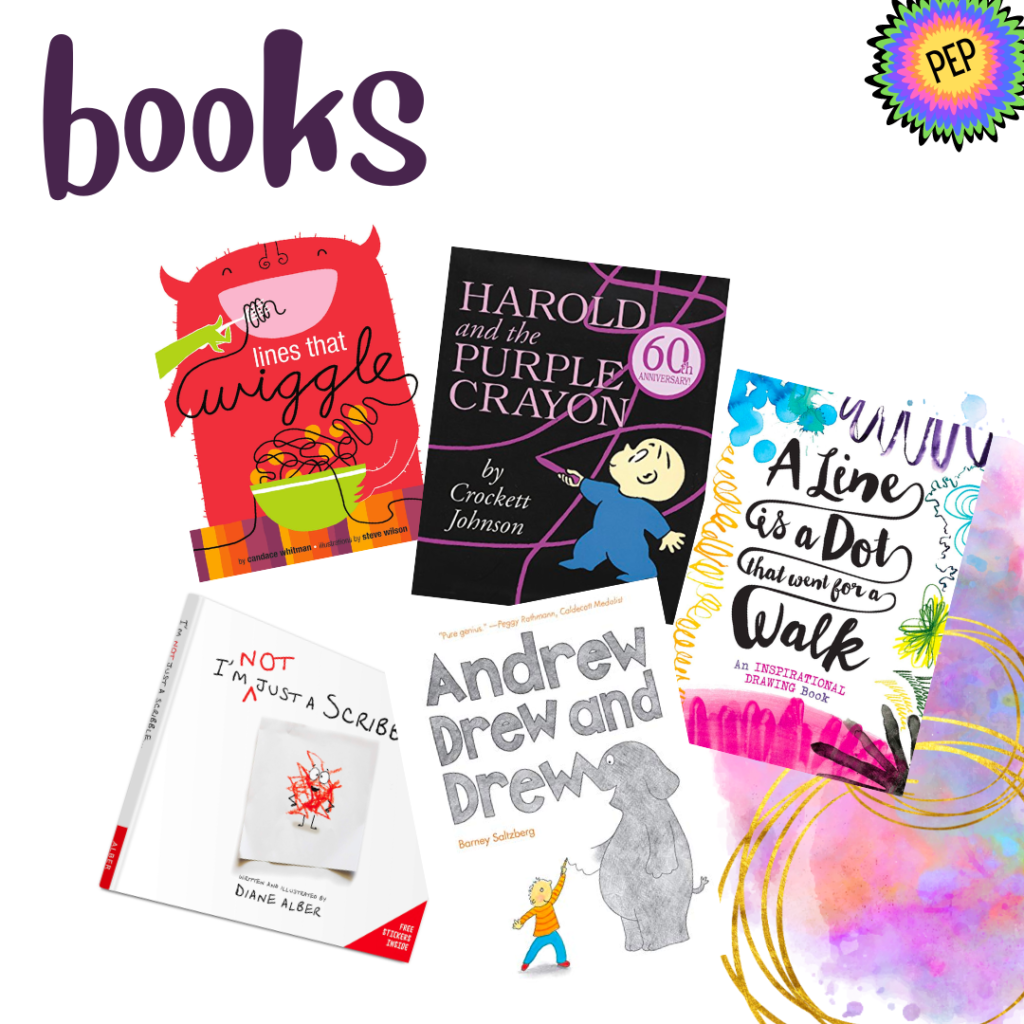"Every line tells its own story, even the very tentative ones."
Gillian Redwood
The first thing we recommend is teaching color – because, let’s face it, rainbows. There isn’t a person alive who wouldn’t walk into a Crayola factory and not gape at the sheer number of colors in front of them.
But then what?
Line follows beautifully after color – and because color was taught first, lines don’t have to be black or white. They can be a beautiful array of colors too.
Teaching line in Kindergarten looks a bit different than teaching line to a 5th grader who already knows what straight and wavy is.
So here’s how to teach line to kids, broken down by ages and stages. Instead of exact grades, since no two children are alike, we’ve broken down the ages and stages the way we do in our Glitterbombers membership, by Beginner, Intermediate, and Advanced skills.

How to Teach Line | Ages & Stages: What to Teach and When
Beginner (K-2nd)
- Multiple types of lines (straight, wavy, zigzag)
- Free-form lines such as doodles and squiggles (such as in the Spaghetti Monster project below)
- How to create mood with line

Now it’s time to go a little bit farther in line theory and how they can be used in larger artworks. This is a great time to:
- Use line as patterns within art
- Create using continuous lines – both abstract and having fun drawing items without lifting a pencil
- Use lines to create texture

Advanced (5th-7th)
Here, children start to explore what they know about line and how it can be used in their own personal art. At this stage, kids should:
- Create sketchbook zentangles and patterns
- Create a neurographic line drawing, learning how line can be used for relaxation
- Use line as negative space instead of as positive
- Create a line color scheme, blending their knowledge of color and line together

5 Books for Teaching the Element of Line

Here’s 5 of our favorite books for teaching line (there’s more inside our PEP Curriculum inside the Glitterbombers membership). These are Amazon afflinks which means we earn a small percentage that goes towards coffee at no additional cost to you.
Ready to add Line to your Curriculum?
Ready to add Line to your Curriculum?
Or create your own scratch art paper and use line to create fireworks!
Join the Glitterbombers Membership!
You’ll find hundreds more art projects, videos, and resources at your fingertips for whatever you’re studying, or whatever art concept you’re ready to teach. Head here to hop on the waitlist and find out when we open next!


Grade 1/2 Teacher